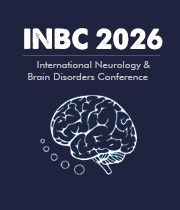Change blindness
Change blindness is a phenomenon observed in both everyday life and in neurological studies which describes the failure of a person to recognize or detect large changes to familiar sets of visual stimuli. It is associated with the inability to observe the difference between two successive visual scenes that contain different elements. Studies of this phenomenon date back to the nineteenth century, and since then numerous experiments have been conducted to explore the factors that contribute to change blindness. Previous research has found that the severity of change blindness may increase when presented with unfamiliar stimuli. This has been found to be particularly true for changes between similar objects. Given the importance of change detection in everyday life, it is therefore important to determine how our brains detect change in less familiar objects or environments. Recent studies have begun to focus on the neurological underpinnings of change blindness, which has significant implications for our understanding of visual perception. Recent neuroimaging studies have identified several networks involved in the processing of change. The ventral attention pathway has been particularly implicated in the detection of changes to both familiar and unfamiliar scenes. In the first stage of the process, the ventral attention pathway is involved in the activation of the inferior parietal cortex, and this activation is necessary for the rapid detection of change. This neural activity is then propagated through the posterior middle temporal gyrus and ventral occipital temporal junction to the ventral spinal tract. This propagation is correlated with the successful detection of change. Changes to the neural networks underlying change blindness are believed to play a role in a variety of neurological disorders. For instance, individuals with dementia or Alzheimer’s disease are more likely to experience change blindness. It has also been found that individuals with schizophrenia may be less able to detect changes in the environment, as they perceive the same scene to be completely different. Collectively, these findings suggest that the mechanisms underlying change blindness are important for the normal functioning of the brain. As our understanding of change blindness improves, it is likely that research will continue to uncover new neurological pathways involved in the detection of change. Additionally, further research may lead to improved treatments for neurological disorders that are associated with the inability to detect change. Ultimately, understanding change blindness and its implications for our understanding of human vision is important to ensuring that we optimize our visual perception.

Joe Sam Robinson
Mercer University, United States
Robert B Slocum
University of Kentucky HealthCare, United States
George Diaz
Memorial Healthcare Systems, United States
Daniel Curry
Texas Children’s Hospital, United States
Zhenhuan Liu
Guangzhou University Chinese Medicine, China
Kiran Ghotra
Lake Erie College of Osteopathic Medicine, United States




Title : Atypical presentation of Juvenile myoclonic epilepsy in a 16-year-old female: A Case Report
George Diaz, Memorial Healthcare Systems, United States
Title : What we don’t know about hydrocephalus and It’s management
Daniel Curry, Texas Children’s Hospital, United States
Title : Artificial intelligence-driven DWI and FLAIR for the detection of early stroke changes: A systematic review
Shari L Guerra, The Medical City, Philippines
Title : Mapping neuroplasticity in occupational therapy: Evidence-based interventions with measurable neural outcomes
Jessica Marchant, Texas Woman's University, United States
Title : Non-pharmacologic management of orthostatic hypotension in inpatient rehabilitation: A quality improvement initiative
Laura Steakin, Rehabilitation Institute at Sinai, United States
Title : Non-pharmacologic management of orthostatic hypotension in inpatient rehabilitation: A quality improvement initiative
Mackenzie Weber, Rehabilitation Institute at Sinai, United States